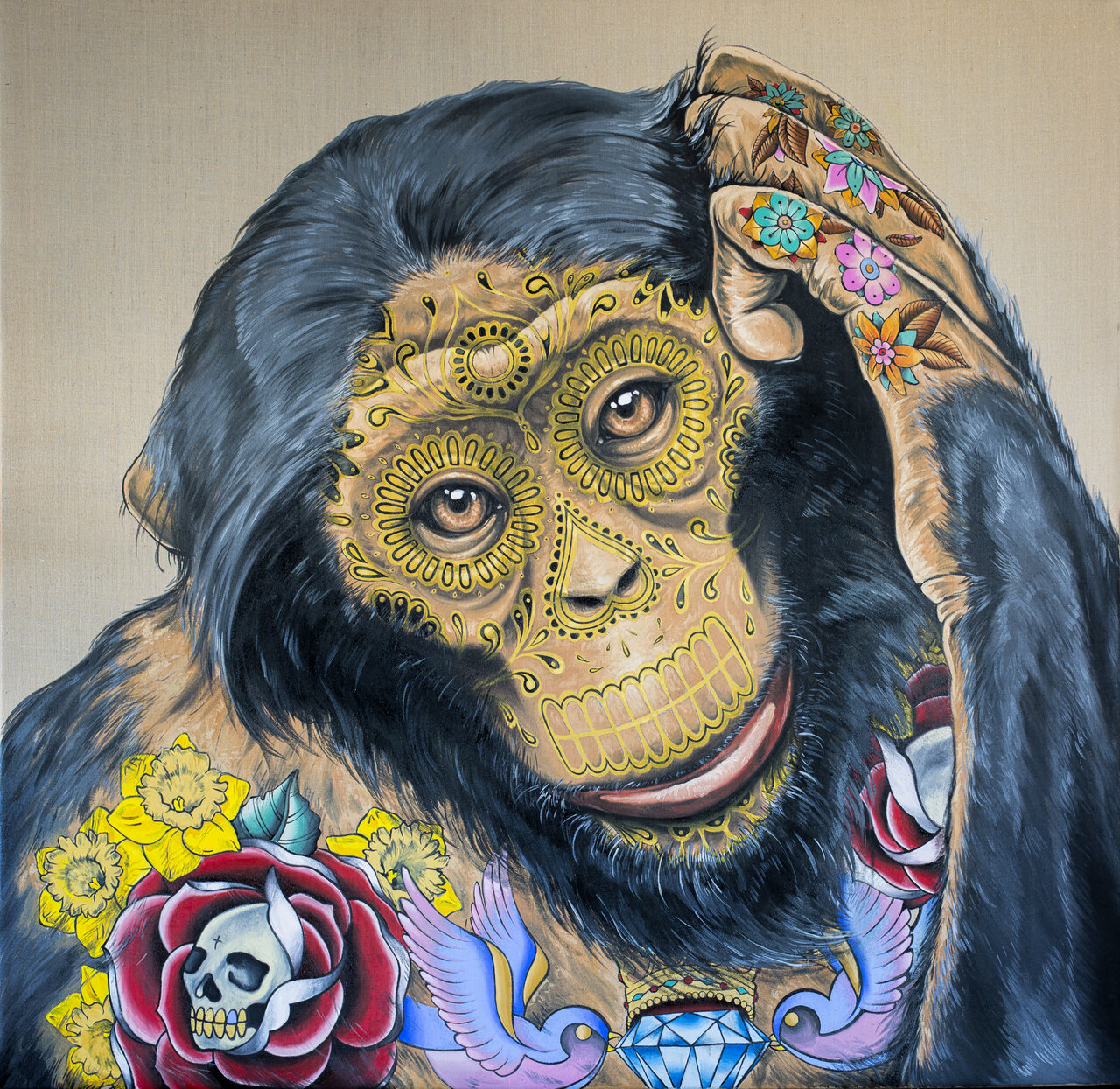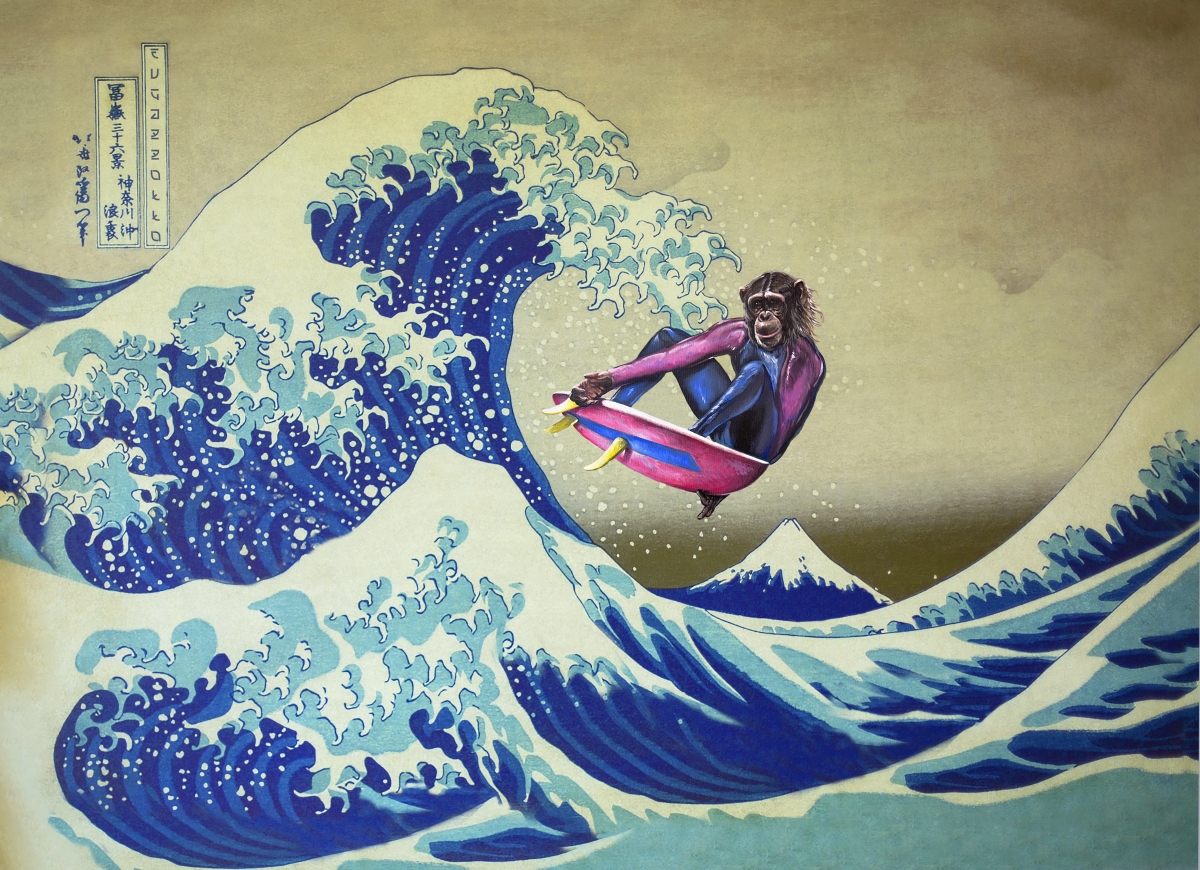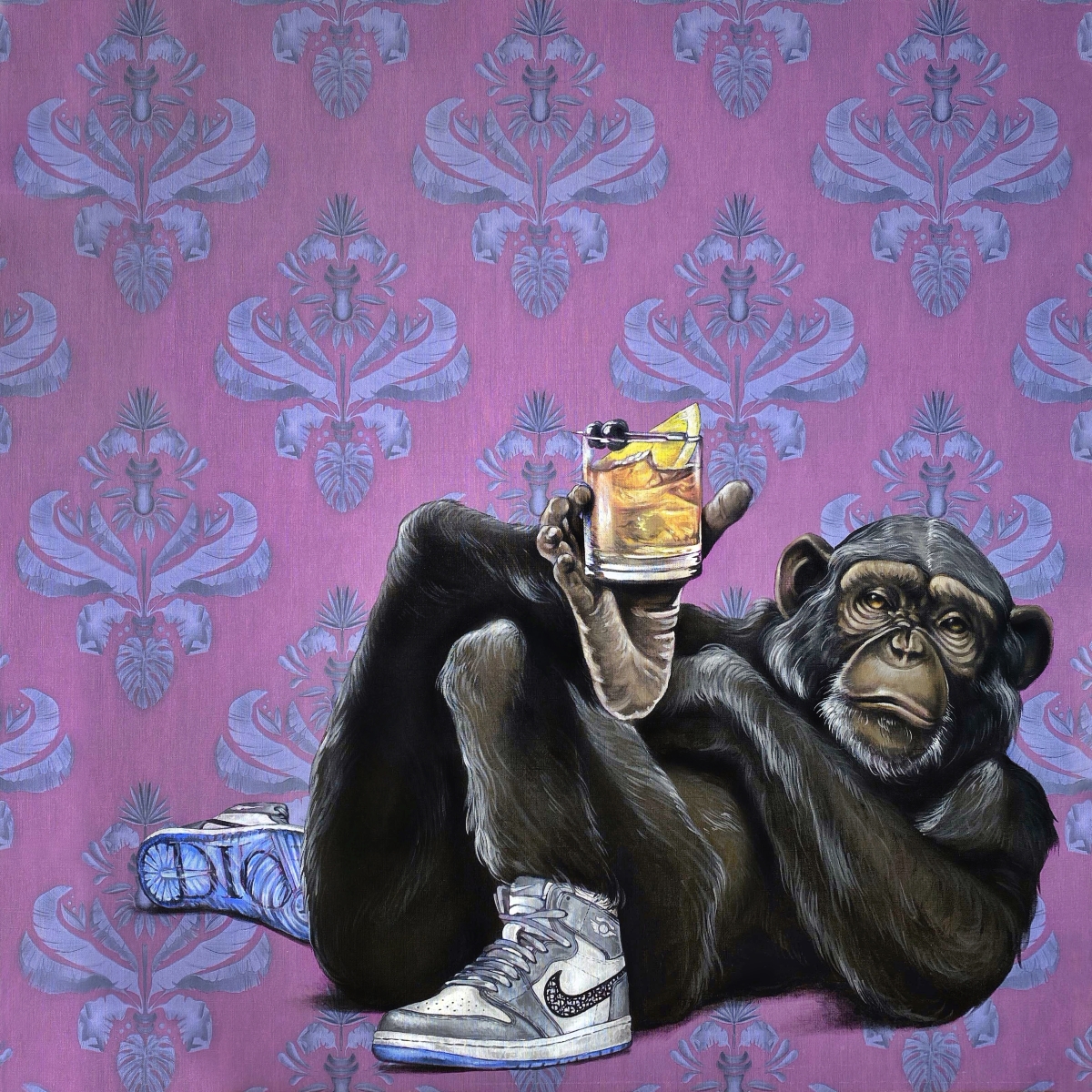
Artist’s Biography
Simone Fugazzotto incorporates monkey figures into most of his paintings.
Humans’ features are combined with the figure of monkey in a virtual chat and crossover; anthropomorphic animals do not just act as a link between us and the story of evolution: apes replace man and accomplish forms of humanized behavior.
“Therefore”, he says, “my monkeys are filled with all the feelings and expressions joined to humans in the collective imagination : laziness, apathy, boredom, snobbism and fear of ourselves.”
After completing artistic studies in Milan and a short period at the city’s Brera Academy, Fugazzotto moved to New York for five years where exposure to the city’s art scene stimulated his portfolio, deepening his painting by experimentation with sculpture and animation.
He paints on canvas but also explores various materials: raw jute, wood, plexiglass and cement slabs mounted on canvas – which he considers a fundamental part of the work and complementary to his imaged expression. These elements are decisive for his reflection on the contemporary human being, lost in itself between passion and vice.
“I paint human beings for what we are: as a racist, stupid, poetic, sick, beautiful and perverse Kind.”
Simone Fugazzotto was born in Milan where he lives and works.
Bio sourcehttps://www.fugazzottosimone.com/about
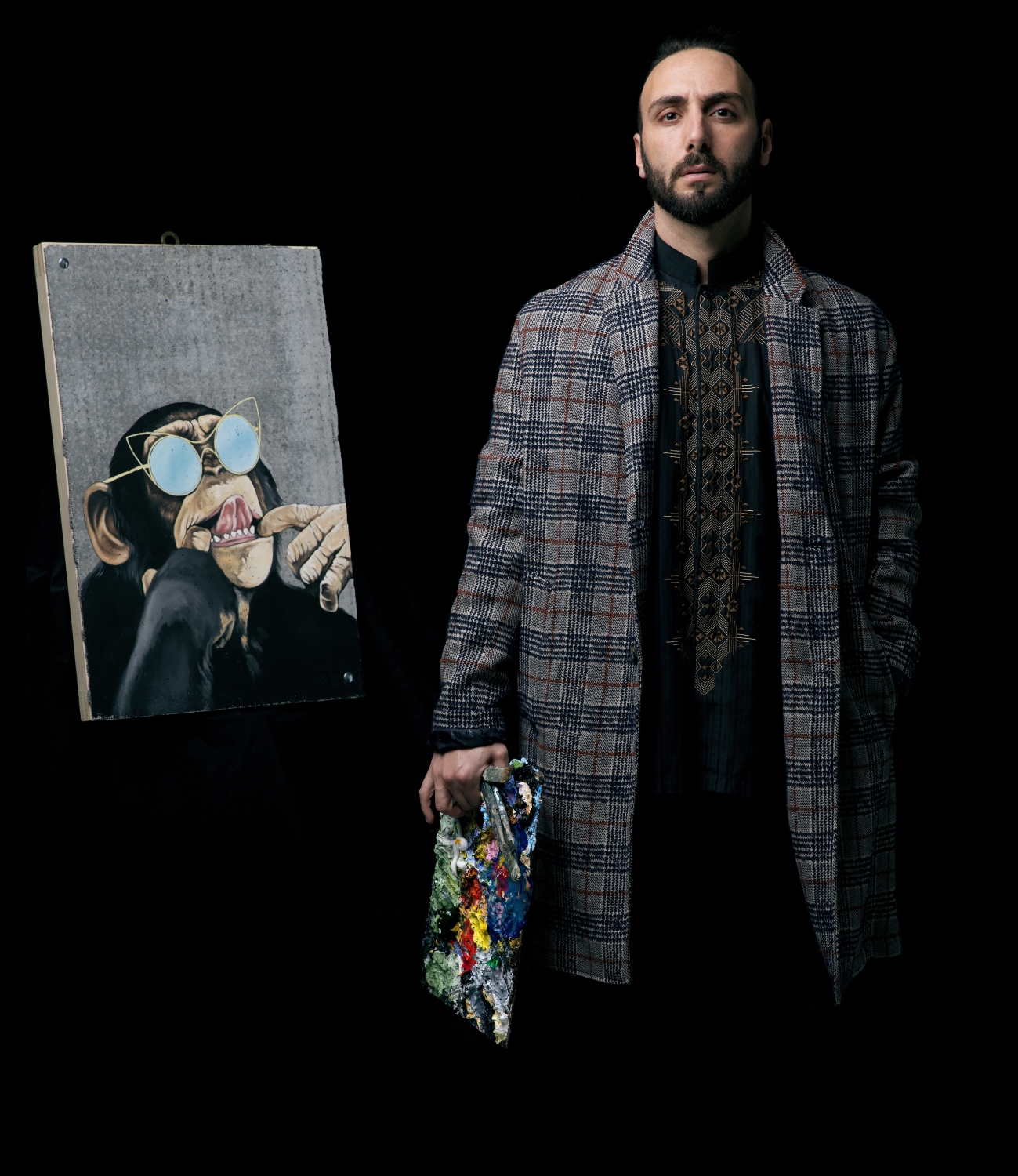
Interview
I come from the poorest neighborhood in Milan, La Barona. When I was a child in the 80’s, surrounded by drug dealers and thieves, I was very shy, always by myself. I already dreamed of being able to become a painter. When I look now at my path from the outside, it seems impossible to me that I managed to get to where I am, especially considering where I started, with no money and no art connections at all.
The strongest memory of my childhood is when I discovered that my father, whom I adored, was a drug addict and alcoholic. It was a huge disappointment that gave me enough anger to get out of the neighborhood and start traveling the world.
Do you remember how and when you decided to become an artist?
I have always known since I was a child that I would work with art, but only after finishing art school when I was 17 years old, did I fully realize that I would become a painter. Since that time, every single effort of my life has been spent in that direction. No distractions at all.
Who are your artistic influences? Who are your favorite current artists?
My first art crush as a boy was Salvador Dalí. In my 20’s, I went through various phases in which I was obsessed first by Caravaggio and then by Francis Bacon. For years now my favorite painter has been Pablo Picasso. Among current artists, I really love the work of Kehinde Wiley, Obey, Maurizio Cattelan, and Banksy.
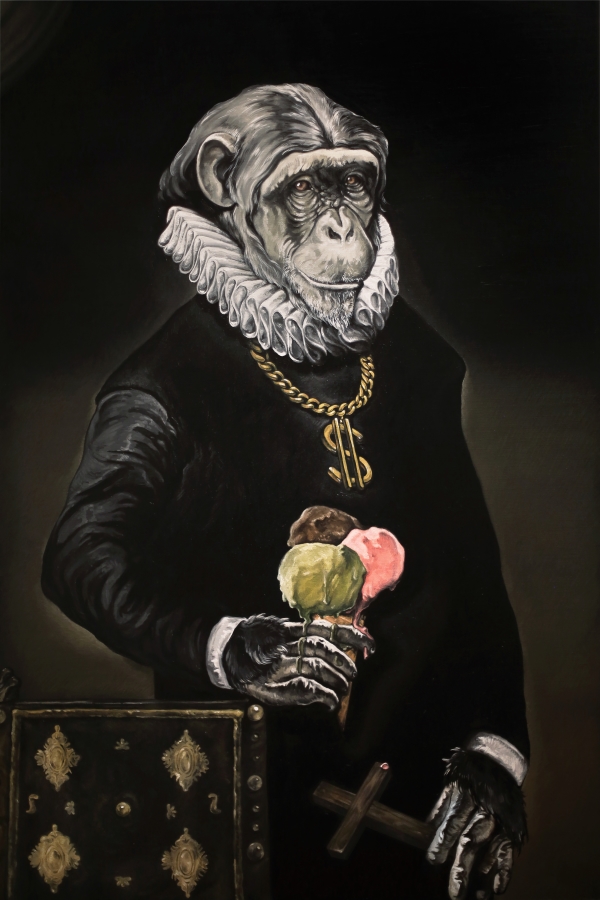
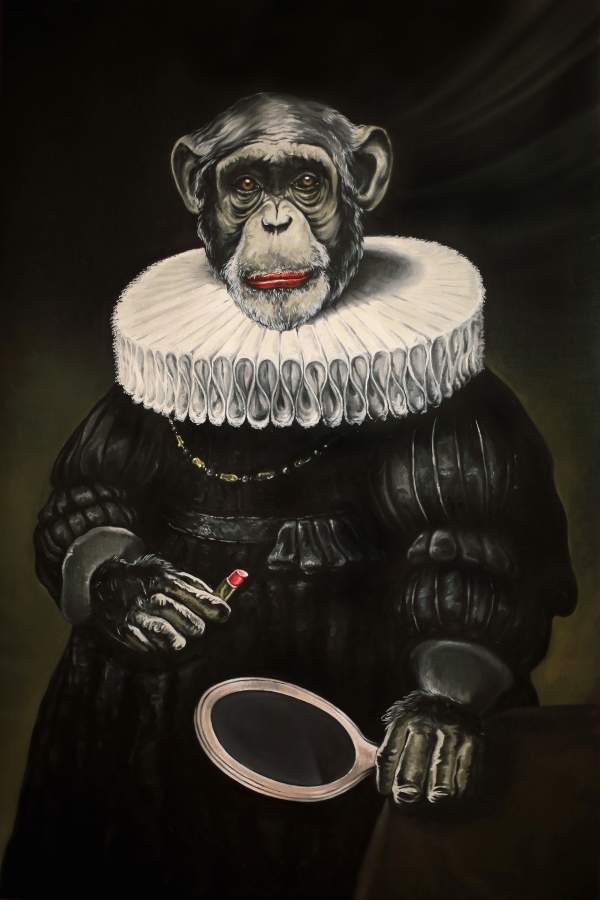
What was the first project you worked on professionally, and how did you land it?
My first project came thanks to luck. We forget that luck has a big impact on our lives, and we must be ready when it comes. I was on the subway in New York, bringing a picture I had just painted to show to a friend in Manhattan (I lived in a basement apartment in Astoria, Queens back then). Getting off the train a woman handed me a business card and left. She eventually became my gallerist and held my first exhibition in her gallery in Prague a few months later.
How do you choose a subject for your painting?
I am inspired by the little obsessions that mark our daily lives. Almost every subject carries out trivial and repetitive actions of which I too am a slave. Eating junk food, spending hours in front of the smartphone, and buying useless items we don’t need. I look at my life and that of those who live around me, and I have millions of examples that I can transfer to my apes.
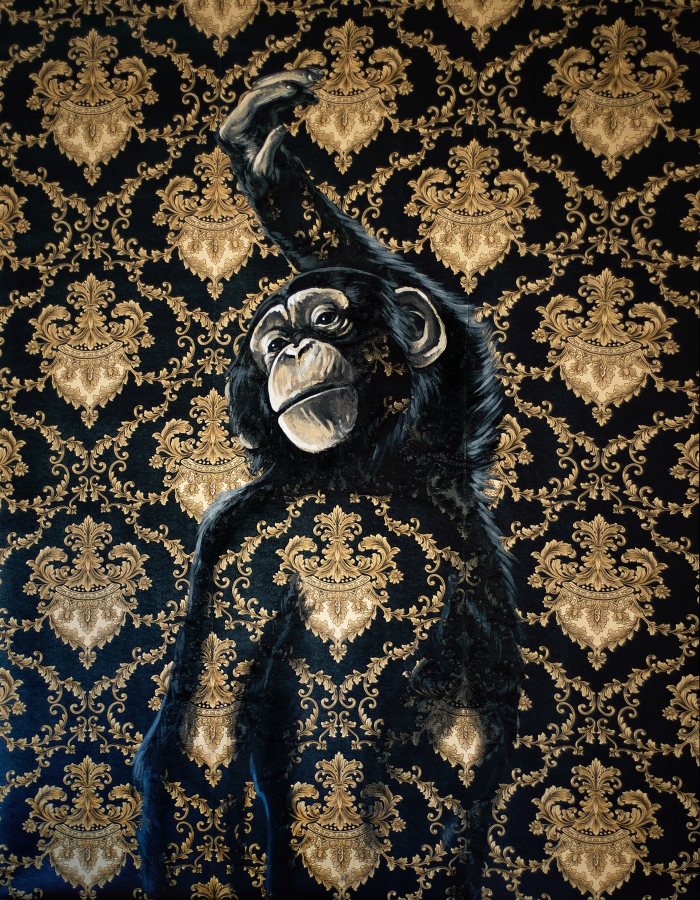
Can you describe your creative process? How long does it typically take to create a painting from idea to artwork?
When I was a boy, the ideas came from reading novels or poems. In recent years It happens more often by watching movies. As soon as I have an idea, I try to fix it in my mind and I mentally work on it for a few days, then when I am convinced, I start painting directly on the canvas without making sketches. I can paint all night and finish the picture
by morning or fight for days or weeks; it depends, I guess.
What is your daily routine when working?
My routine has changed over the years. Now I usually take my little girl to kindergarten and go to the studio to paint. I’ve always lived a disordered life with the certainty that a regular life would kill my artistic instinct, but that’s not true. Now I have schedule that help me to work better. Of course, it happens every now and then that I can’t stop and go on painting all night. But what was once a habit is now a rarity.
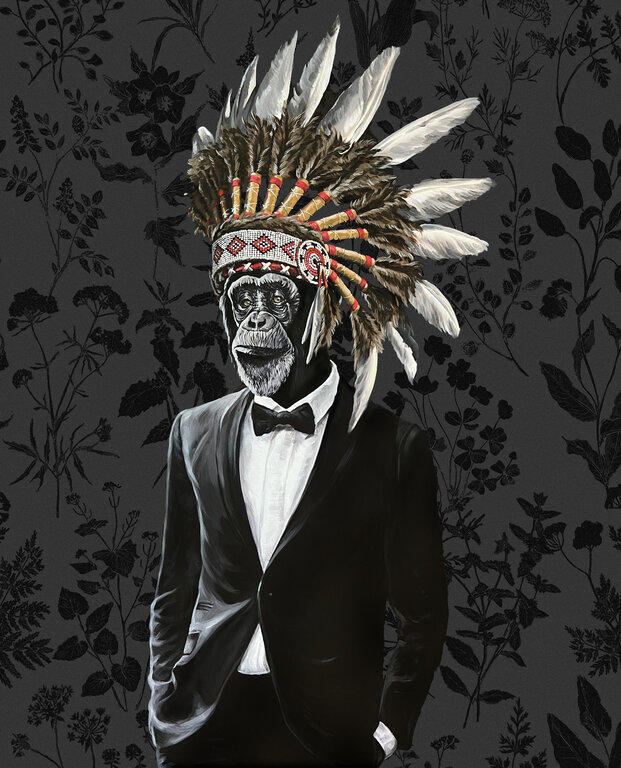
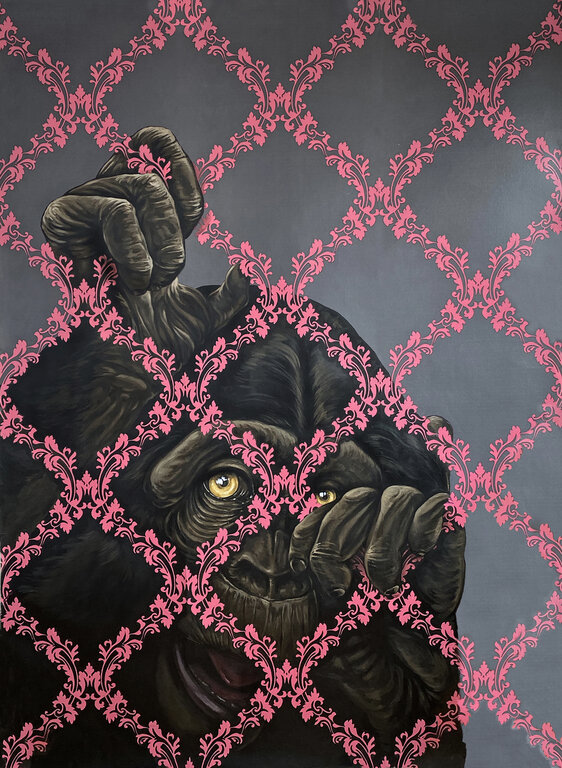
Your art repeatedly makes references to monkeys. What is your connection to these animals?
I have always painted about the human being, but 11 years ago I realized that I needed something different, a metaphor, which would allow me to go deeper but be recognizable at the same time. The figure of the chimpanzee changed my life and my approach to art. It was a rational choice. I chose the apes, and for a year no one wanted to buy one of my paintings, perhaps frightened by the subject. Then, suddenly things changed.
What are you doing when you’re not creating? What (other) hobbies do you have?
I am obsessed with cinema and music, but my greatest passion after art is football. I play it on the pitch and watch it in the stadium. As a boy I was good, and I could have possibly become a pro. There was a moment when I had to choose between art and football, and I chose art.
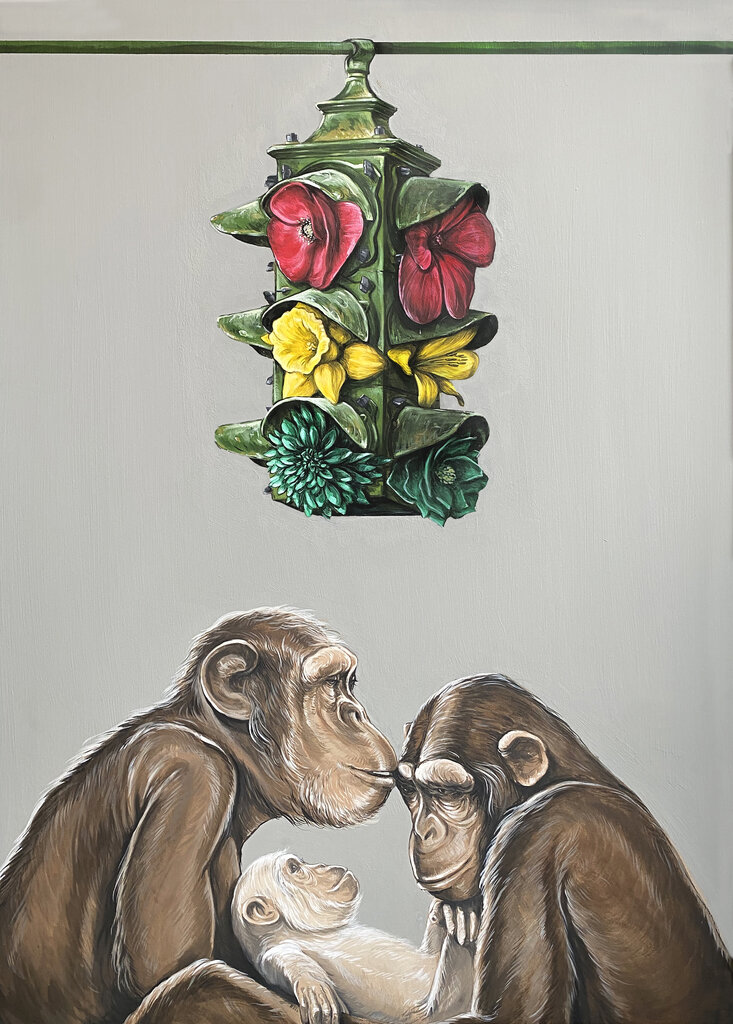
What do you aspire to as an artist?
The hardest thing is to be in balance. With my art I have gone much further than I ever dreamed. As long as I can go to the studio to paint without anyone telling me what to do, I am happy. I am already where I aspired to be.
What is your favorite quote?
“Inspiration exists, but it has to find you working.” ~Pablo Picasso
Editor: Lisa Portscher
https://www.instagram.com/lisaportscher/
